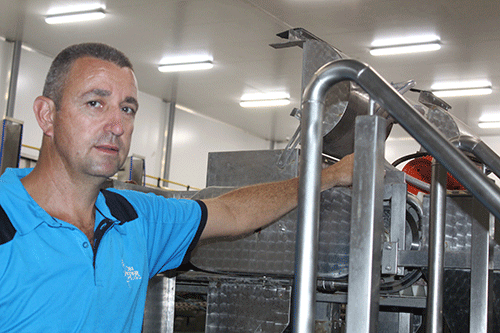Princess Brand Processing (PBP) has taken investment in the fishing industry to a whole new level.
African Selection Group invested N$310 million to set up flagship operations at Walvis Bay that consists of three units, namely the freezing plant, fishmeal plant and the cannery.
The cannery is expected to be commissioned in June, and it will create about 450 additional jobs for the industry.
General manager Adolf Burger says despite facing an uphill battle, they are on the right track in firmly cementing their space in the fishing industry.
“We have had our fair share of trouble, but we are keen on exploring all avenues of value addition, especially to the horse mackerel fishery, as this is one of the untapped fisheries that can assist the government to address unemployment in the country,” said Burger.
Hence, he said, canning horse mackerel is the way to go.
In the past, Namibian canneries mainly focused on pilchards; however, there is currently still a moratorium on pilchards in place to help the fishery to recover from over-catching, which has forced some canning facilities to shut down.
“This is what makes PBP different. We will be canning horse mackerel, as it is available all year round, and it is more sustainable, unlike the pilchards,” Burger explained.
This, he said, will allow them to employ people on a permanent basis, unlike the pilchard industry that provided seasonal employment.
The canning process
According to the operations manager, Pierre le Roux, the canning facility has a processing capacity of 15 metric tons of raw fish per hour, giving employment opportunities to 450 employees.
“Whole round or HGT (headed/gutted/tailed) fish can be processed either from frozen or wet fish into the final product. Fish is transported with water from the flume onto the cutting tables, where the majority of the workforce is stationed to transfer the fish from the conveying tables into the block belts,” he said.
Explaining the delicate process further, he said the whole round fish moves through a cutting process, where the head, tail,and guts are removed, leaving a cutlet ready to be put into a can.
The cutlets are then put through an automated packing system, which is pre-set to pack a certain number of cutlets into a can at around 60 cans per minute.
“The cans with the raw fish cutlets are conveyed to the exhaust box for the first cooking process. The cans are then exposed for around 25 minutes to direct steam injection at 98°C and then cooked at 80°C,” he explained.
After the cooking process, the water inside the can is removed through a decanter, leaving only the can with the cooked fish inside.
Sauce (tomato, chilli or curry) is added at 80°C to ensure the fish and sauce are at the same temperature to produce the ideal conditions to create vacuum during the closing of the can and, therefore, extend the shelf life of the product.
According to him, the most critical stage during the canning process is the closing of the can by means of a seamer to ensure the seam conforms to compulsory specifications, ensuring shelf life to be maintained.
After closure, the can is washed, marked (traceability) and then put into baskets – ready for the second cooking process.
“The last cooking process is done inside a retort, where the canned fish is cooked at 121°C under pressure for approximately 62 minutes. This will ensure that the canned product is commercially sterile, meaning the product is free from pathogenic and micro-organisms.
After the second cooking process is completed, the cans are cooled and dried before either being labelled directly or stored unlabelled to be labelled at a later stage. Canned fish normally has a shelf life of three years if stored under the right conditions,” he said.


